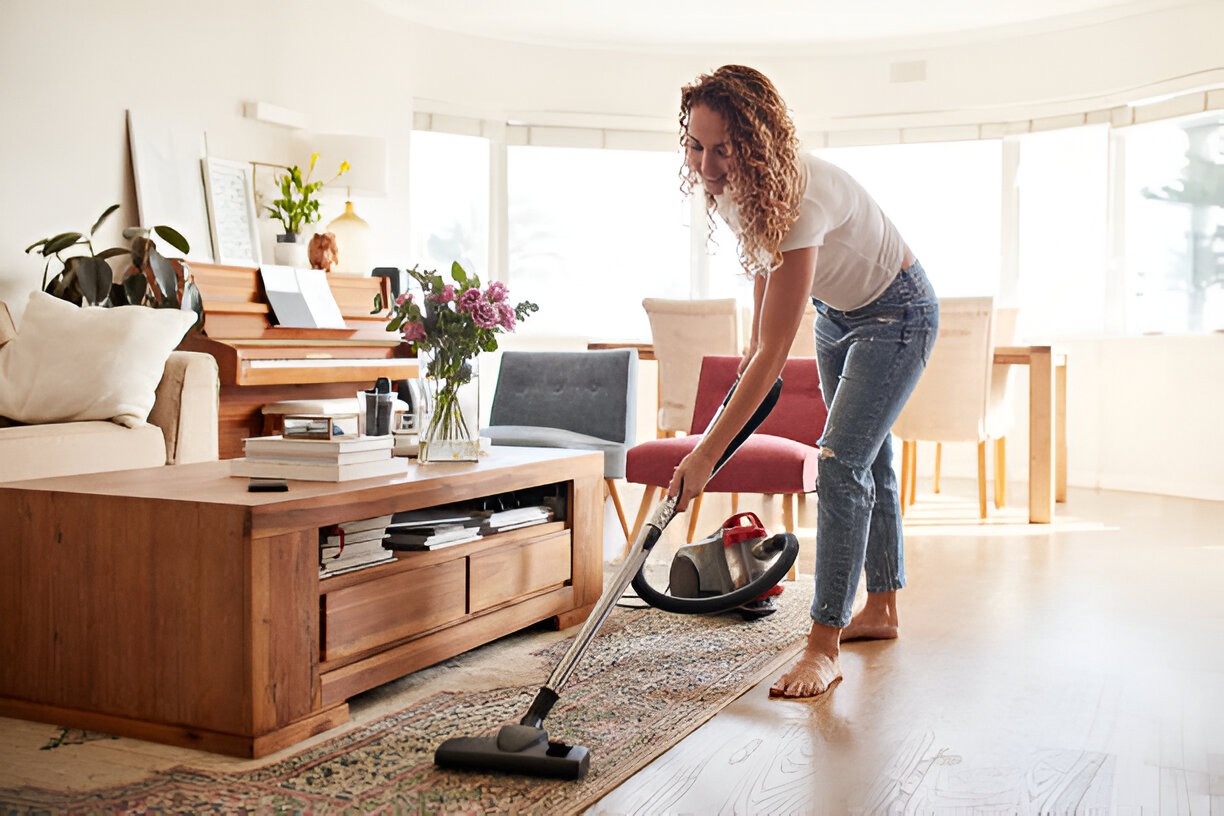Carpet cleaning can seem like a big task, but choosing the right method can make it much easier. Different cleaning methods work better for different needs. Let’s explore the best carpet cleaning processes to help you pick the one that suits you best.
Hot Water Extraction – Steam Cleaning
Hot water extraction, also known as steam cleaning, is one of the most popular carpet cleaning methods. It is well-known for its deep-cleaning abilities. Here’s how it works: first, a special solution is sprayed on the carpet. This solution helps to loosen dirt and grime. Then, hot water is injected into the carpet. After that, the dirty water is vacuumed up.
Advantages:
- Deep Clean: This method is excellent for removing deep stains and ingrained dirt.
- No Residue: It doesn’t leave behind residue, so carpets stay clean longer.
- Good for Allergies: It helps to remove dust mites and allergens.
Disadvantages:
- Drying Time: Carpets can take a few hours to dry completely.
- Cost: It can be more expensive compared to other methods.
Hot water extraction is great for both residential and commercial carpets. However, if you have a busy schedule or need a quicker solution, you might want to consider other methods.
Carpet Shampooing
Carpet shampooing is an older method but still used today, especially in commercial settings. This method involves applying a foamy shampoo to the carpet. A rotary brush works the foam into the carpet fibres. After the foam dries, it is vacuumed up.
Advantages:
- Effective for High Traffic Areas: It can be useful for carpets with a lot of foot traffic.
- Visible Clean: Carpets can look brighter and cleaner in the short term.
Disadvantages:
- Residue: The foam can leave behind a sticky residue.
- Rinsing Required: After shampooing, the carpet needs to be rinsed to remove residue, which can be a hassle.
While shampooing can make carpets look clean quickly, it may not be the best choice for a deep clean. It is also not ideal for sensitive or delicate carpets.
Dry Carpet Cleaning
Dry carpet cleaning uses minimal water. This method involves spreading a dry powder over the carpet. The powder attracts dirt, which is then vacuumed up.
Advantages:
- Quick Drying: The carpet is dry almost immediately after cleaning.
- Convenient: It’s easy to do and doesn’t require a long drying time.
Disadvantages:
- Not a Deep Clean: It may not remove deeply embedded dirt as effectively as other methods.
- Powder Residue: Some powders can leave behind a residue that might attract dirt over time.
Dry carpet cleaning is a good choice if you need a quick clean and don’t want to deal with wet carpets. It’s especially useful for carpets made from materials that don’t handle water well.
Encapsulation Carpet Cleaning
Encapsulation is a newer method that uses special chemicals to clean carpets. A foam-like chemical is applied to the carpet. This chemical forms crystals around the dirt. After the foam dries, it is vacuumed up.
Advantages:
- Low Moisture: Uses very little water, so carpets dry quickly.
- Good for Maintenance: It’s useful for regular cleaning and maintenance.
Disadvantages:
- Not a Deep Clean: It might not clean as deeply as hot water extraction.
- Periodic Deep Cleaning Required: It’s best used in combination with other methods for a thorough clean.
Encapsulation is ideal for quick maintenance and keeping carpets looking good. For a deeper clean, it should be combined with other methods like steam cleaning.
Bonnet Carpet Cleaning
Bonnet cleaning involves using a machine with a spinning pad. The pad is soaked in a cleaning solution and then used to clean the top layer of the carpet. The machine works by scrubbing the carpet surface to remove dirt.
Advantages:
- Quick and Efficient: It provides a fast surface clean.
- Minimal Moisture: Uses less water compared to other methods.
Disadvantages:
- Surface Cleaning: Only cleans the top layer of the carpet.
- Dirt Remains: Dirt can still be trapped deeper in the carpet fibres.
Bonnet cleaning is suitable for high-traffic commercial areas that need regular surface cleaning. For a deeper clean, consider using it alongside other methods.
Choosing the Best Carpet Cleaning Process
The best carpet cleaning process depends on your needs. If you want a deep clean, hot water extraction is often the best choice. For quick and easy cleaning, dry carpet cleaning or bonnet cleaning might be more suitable. Encapsulation works well for regular maintenance, while carpet shampooing can be effective for high-traffic areas but may require more effort.
Think about factors like drying time, cost, and the level of clean you need. By choosing the right method, you can keep your carpets looking fresh and clean for longer.
Contact us today!
Ready to Transform Your Carpets?
At Dave’s Cleanouts and Collectibles, we offer expert carpet cleaning services tailored to your needs. Whether you need a deep clean or a quick touch-up, our skilled team has you covered. Don’t let dirty carpets bring down the look of your home or office. Contact us today to schedule your carpet cleaning and enjoy a fresher, cleaner space!
Feel free to reach out to us and find out how we can help you with the best carpet cleaning process for your needs. Let’s make your carpets look and feel new again!
Frequently Asked Questions
1. How often should I clean my carpets?
For best results, clean high-traffic carpets every 6-12 months. Less used carpets can be cleaned every 12-18 months. Regular cleaning helps maintain appearance and extend carpet life.
2. Is steam cleaning safe for all carpets?
Steam cleaning is generally safe for most carpets. However, delicate or water-sensitive carpets might be damaged. Always check manufacturer guidelines or consult a professional before using steam cleaning.
3. Can dry carpet cleaning remove tough stains?
Dry carpet cleaning is effective for surface dirt but may struggle with deep stains. For tough stains, consider steam cleaning or a professional service to ensure thorough removal.
4. How long does it take for carpets to dry after cleaning?
Drying time varies by method. Steam cleaning can take 6-12 hours, while dry cleaning methods often allow carpets to dry in about 1-2 hours. Factors like ventilation and carpet type affect drying time.
5. Are carpet cleaning chemicals harmful to pets?
Some carpet cleaning chemicals can be harmful to pets. Opt for pet-safe or eco-friendly products. Ensure carpets are thoroughly dried before letting pets back in the cleaned area.
6. Can I clean my carpets myself or should I hire a professional?
DIY carpet cleaning is feasible for minor maintenance, but professional services offer deep cleaning and expertise. For extensive cleaning or tough stains, hiring a professional ensures optimal results and carpet care.


